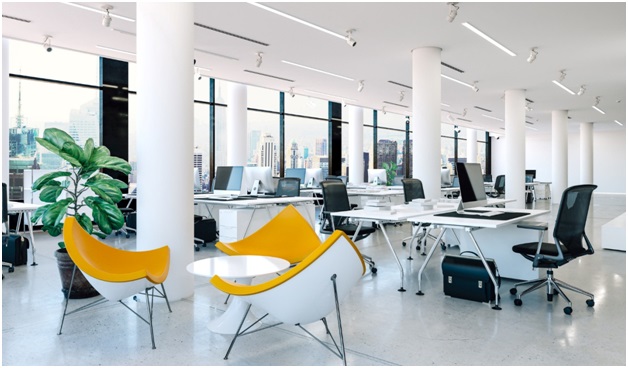Are cramped cubicles getting you down?
If you have a small office layout, it can be pretty tough to make the most of your limited space. But in an age where over half of employees worldwide work remotely at least once a week, small offices are poised to offer all the flexibility and efficiency needed for a modern team. Here’s how to organize an office to maximize your space.

Let Employees Brainstorm
Let your team propose ideas to change up your office space. You might be surprised by their ideas! Use tools like Room Sketcher or other free design software to help everyone envision the options.
Create Flexible, Multi-Purpose Common Areas
Consider opting for easy-to-move and even wheeled furniture for simple rearrangement. This allows your team to make their common space work for them, not the other way around. When your office organization offers shared and configurable desks and tables, the possibilities are endless.
Use Simple Business Organization Best Practices
All of the best practices that help you organize your office space will be even more useful if you have a small layout. Make sure you’re using the following strategies:
- Label your cables to avoid confusion
- Make the most of vertical space with shelves and wall hooks
- Let the light shine in for the illusion of a larger space
- Use smaller pieces of furniture to avoid consuming valuable space
- Go digital to use fewer paper products
- Rely on stand-up meetings instead of making a meeting area
With these tips, you’ll be able to create a more orderly, clutter-free space for your team.
Try “Hot-Desking” or “Hoteling”
These concepts have been around since the 1990s, but they’ve taken off in the past few years. Both hot-desking and hoteling involve less fixed seating and let employees decide where they want to work.
Hot-desking is a practice in which all desks are up for grabs, leaving employees to find an open seat each day. Hoteling is similar, but it uses a hotel-based check-in system for a little more ease. These solutions may not be right for all businesses, but smaller offices that often let employees work from home may find them useful.
Free up Space
This doesn’t mean doing a spring cleaning, though that may certainly help. Freeing up space in your office may require a critical eye. What can you do without, and how can you go a little more minimalistic with things you don’t need to have around?
You may want to toss or donate unused furniture and outdated equipment or consider renting a storage unit for things you won’t use regularly. For tech companies, colocation may be a great idea as well, so find out more here.
Don’t forget that you can also free up space, figuratively speaking, by offering more telecommuting opportunities. When more employees have the flexibility to work from home, you’ll create the illusion of a larger office without losing productivity.
Make the Most of Your Small Office Layout
The right small office layout can help you use the space to its maximum capacity. With a little strategic effort, plus input from your team, you can create a functional and flexible workspace that offers everything your employees need to thrive.
Looking for more of the tips you need in life, tech, and business? Check out our other posts for more insights.




